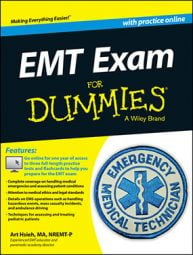For exam purposes and in the field, EMTs are required to document what you observed about the patient and the environment, the findings that you assessed, the care you provided, and any changes in the patient’s condition while in your care. Documentation may be done either on paper forms or electronically with a computer, laptop, or tablet. The following are key things to keep in mind when documenting:
Document completely. Use the CHART or SOAP method to capture all the details. Don’t leave anything blank. Cross out, and initial if possible, any sections that are not relevant.
Document consistently. Each patient care report (PCR) should begin and end very similarly. A standardized method of documentation will have you describe the patient, your findings, your treatment, and any changes to the patient’s condition in a methodical way. The more consistent you are in documenting your assessment and treatment, the more accurate and faster it becomes.
Document just the facts. Don’t give your opinion or interpretation of what you saw or heard. For example, your patient is not “drunk.” He has “slurred speech, is unable to maintain his balance, and has an odor similar to alcohol on his breath.” This will help you avoid being charged with libel — you're simply recording what you saw, heard, smelled, and felt.
Spell correctly and use good grammar. You are transmitting information to not only other healthcare professionals, but also quality improvement personnel, police investigators, and, most importantly, attorneys who want to make you look less than professional in a lawsuit. Messy documentation is often interpreted as messy patient care, no matter how well you treated the patient.
The emergency department is extremely busy when you and your partner arrive with a noncritical patient. As you wait in an exam room for a nurse to take your report, your dispatcher pages you for a “cardiac arrest, CPR in progress” at an address two blocks away from your location. You should
(A)move your patient to the hospital bed and let the staff know you are responding to a cardiac arrest nearby.
(B)notify the dispatcher that you are unable to respond to the call.
(C)have your partner respond to the call.
(D)have your partner stay with the patient while you respond to the call.
The best answer is Choice (B). Choice (A) can be construed as abandonment because you did not provide a report to a specific person who took over care of the patient.
Having either of you respond without the other partner, as Choices (C) and (D) suggest, can be construed as a breach of duty because it is customary and within the standard of care to send an ambulance with two crew members.

